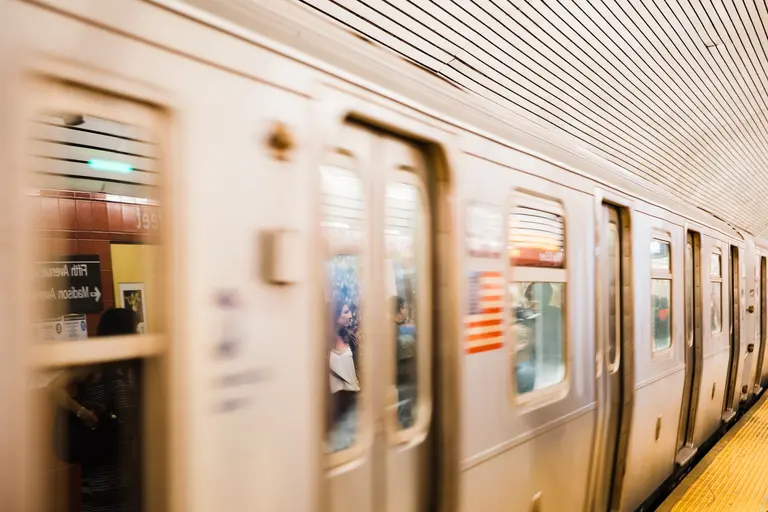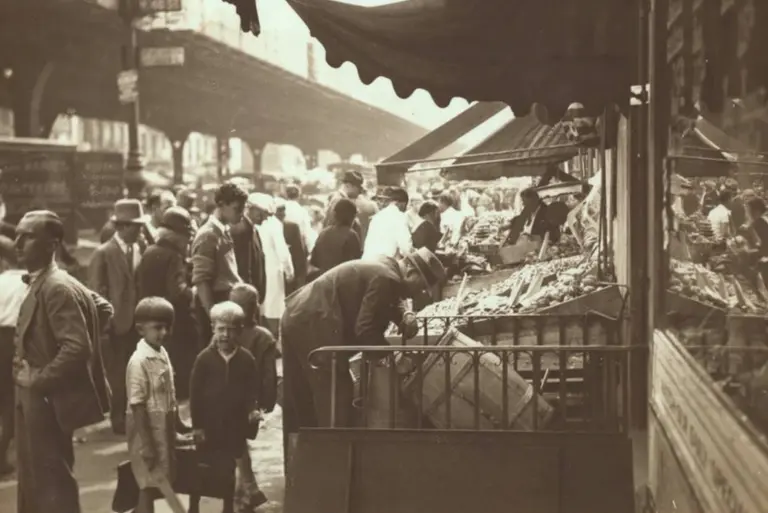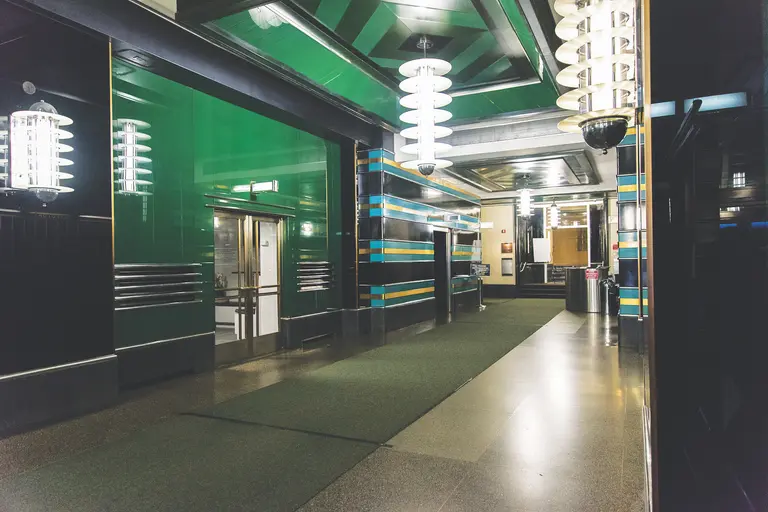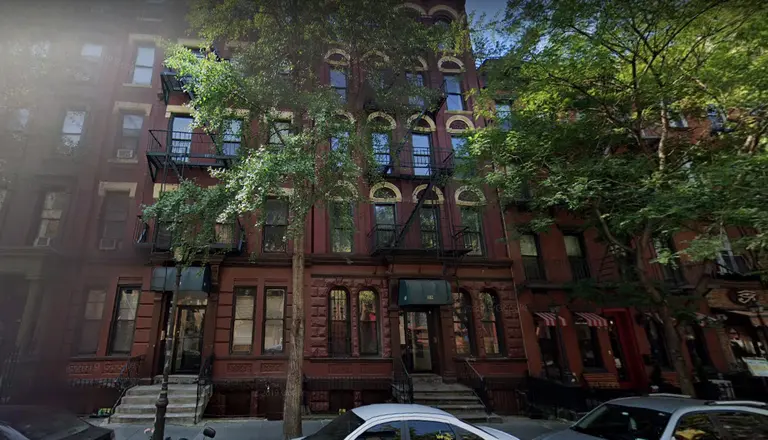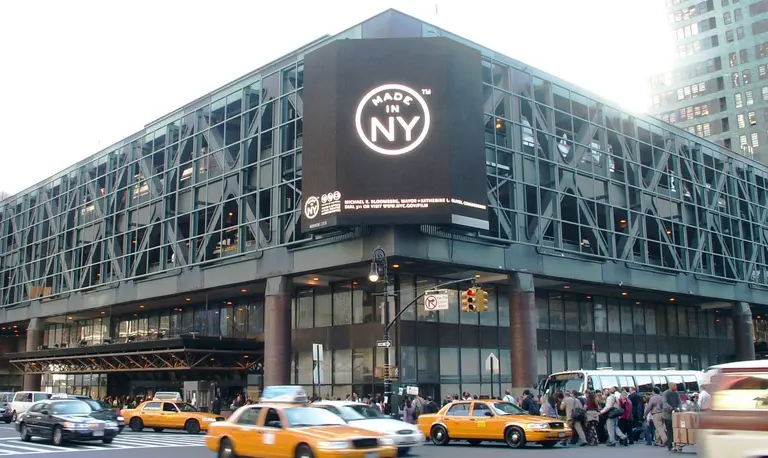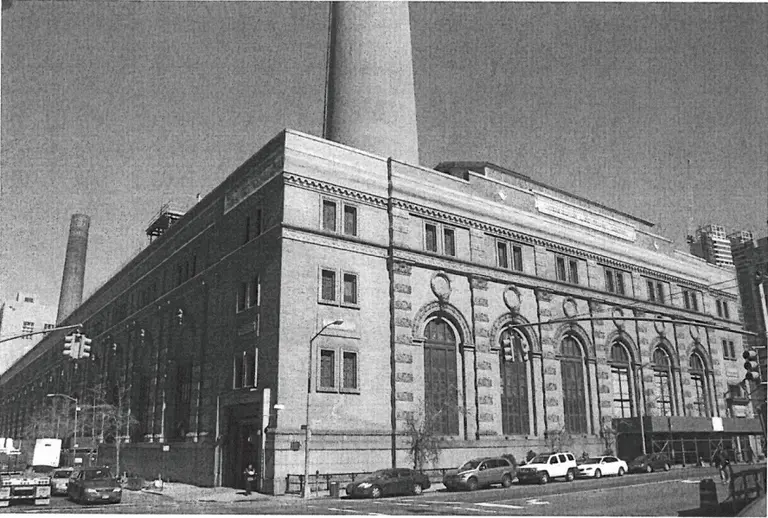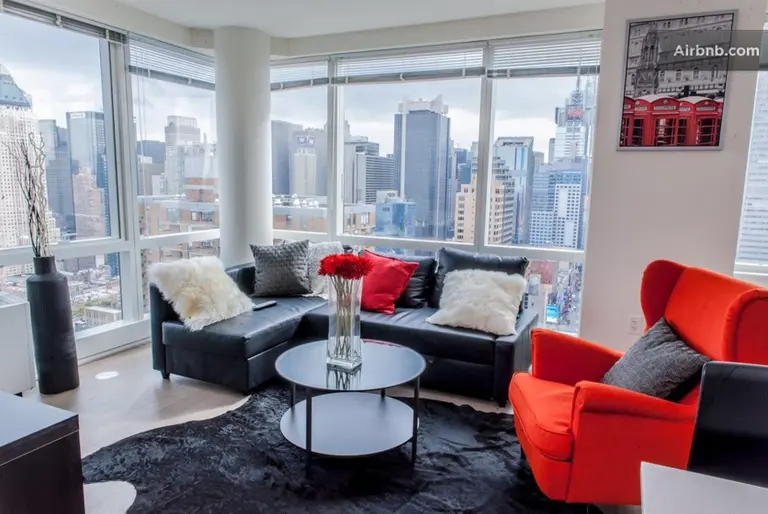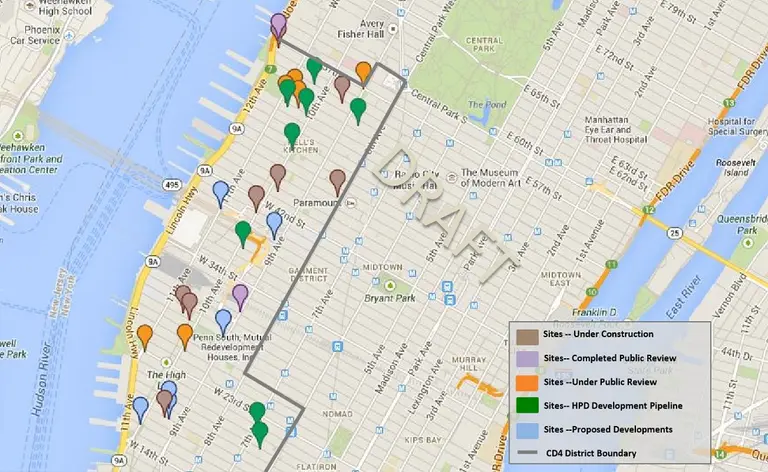NYC unveils new protected bike lane on 10th Avenue in Hell’s Kitchen
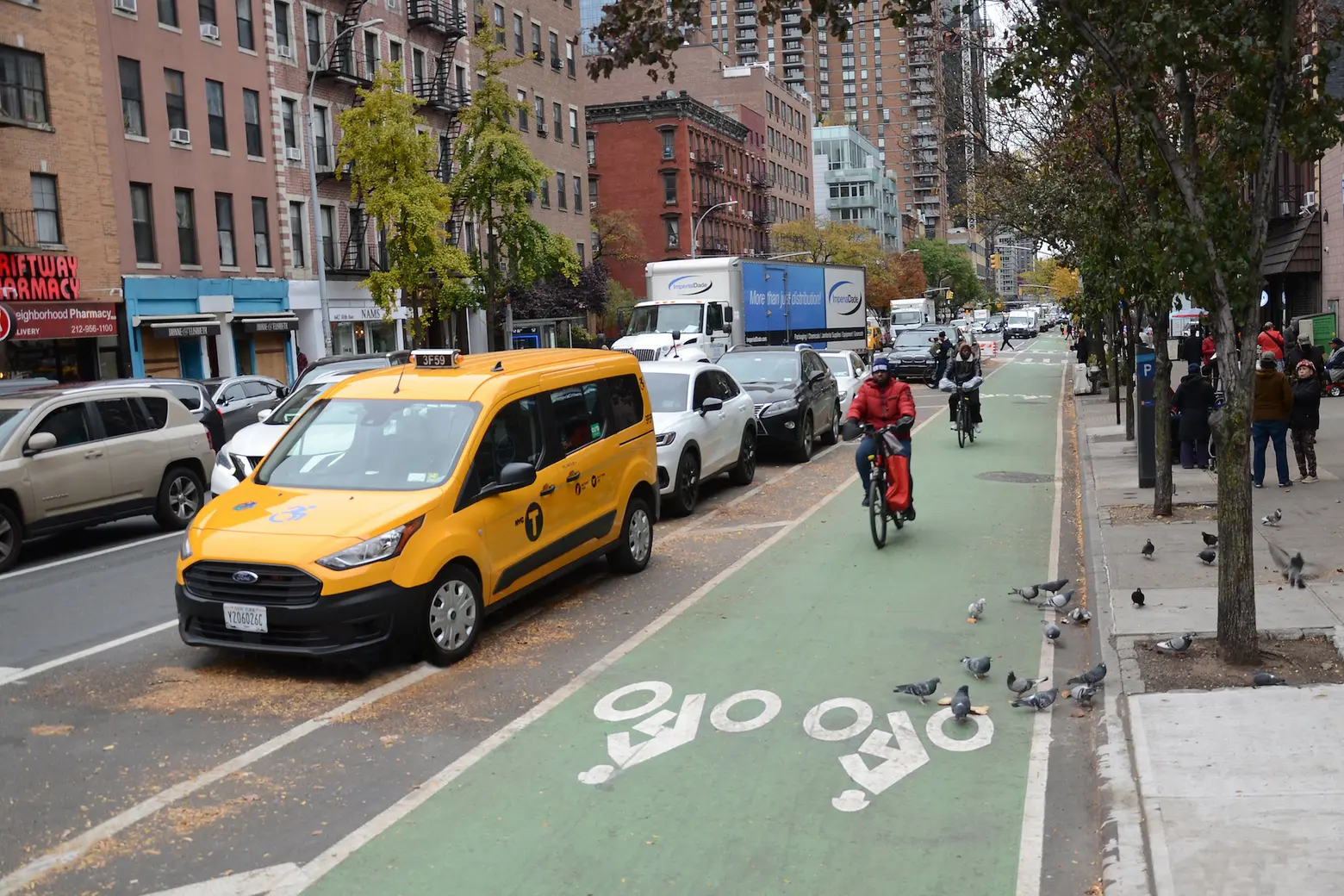
The new, extra-wide bike lane on 10th Avenue. Image courtesy of NYC DOT
The city on Wednesday unveiled the first phase of safety upgrades to a stretch of 10th Avenue in Hell’s Kitchen. Installed between West 38th Street and West 52nd Street, a new 10-foot wide northbound bike lane will more safely accommodate the growing number of cyclists, e-bike riders, and micro-mobility device users. Additional improvements include new concrete pedestrian islands, new bike corrals, and redesigned intersections to slow down drivers when turning.
After getting feedback from the local Manhattan Community Board 4 in 2022, DOT widened the proposed bike lane to 10 feet for most of its length. The project includes a three-foot buffered space between parked cars and the bike lane and four times as many pedestrian islands as included in the initial project.
Protected bike lanes enhance safety for all road users by cutting crossing distances for pedestrians at intersections, lessening vehicle traffic, and improving visibility for all. According to the mayor’s office, protected bike lanes have reduced deaths and serious injuries from traffic accidents by 18.1 percent, with a 29.2 percent decline for pedestrians.
According to Council Member Erik Bottcher, Tenth Avenue has been one of the most dangerous roadways for pedestrians in the city. Between 2016 and 2020, there were 143 pedestrian injuries, 68 cyclist injuries, 314 motorist injuries, and three pedestrian fatalities.
“This is a big victory for our community. Tenth Avenue is one of the most dangerous stretches of roadway for pedestrians and cyclists in New York City,” Bottcher said in a statement. “It’s basically a four-lane highway in the middle of our community. During my first month as a city council member, we organized a rally on 10th Avenue with PTA parents, block associations, and community board members who have long been calling for a redesign that includes a protected bike lane, pedestrian refuge islands, and shorter pedestrian crossings.”
“I want to thank Mayor Adams, Commissioner Rodriguez, Community Board 4, and all the community members who made their voices heard in support of this vital project.”
DOT will soon install left turn lanes with dedicated signal timing at West 41st and West 42nd Streets near the Lincoln Tunnel. Commonly known as leading pedestrian intervals, these design features have been proven to reduce pedestrian deaths and serious injuries by nearly 35 percent.
Protected intersections, also known as offset crossings, can now be found at West 39th, West 43rd, West 45th, West 47th, and West 49th Streets. These crossings feature painted pedestrian spaces that improve visibility between cyclists and drivers and lead to slower driver turns. The city also installed 10 new bicycle corrals along the 14-block stretch.
The second phase of the project, which will install similar improvements from West 14th Street to West 38th Street, will be completed in 2024.
The bike lane improvements along 10th Avenue are part of Adams’ “Charge Safe, Ride Safe: New York City’s Electric Micromobility Action Plan,” which emphasizes the importance of redesigning streets to accommodate the growing use of e-bikes and other micromobility devices in the city.
“As New Yorkers change how they use our streets, we need to change our streets with them — and on 10th Avenue and across the city, we’re doing just that. The upgrades we have completed will make 10th Avenue safer for everyone, and the extra-wide bike lane will make it easier for cyclists to feel comfortable riding through the neighborhood,” Adams said.
“We are proud to partner with the Hell’s Kitchen community to deliver a better experience for residents and visitors alike, and we look forward to continuing on down 10th Avenue.”
The project is also a continuation of the mayor’s effort to improve safety conditions at 2,000 intersections per year. Earlier this month, Adams launched an initiative to boost the five boroughs’ ongoing efforts to improve safety by doubling the number of intersections that receive safety enhancements from 1,000 to 2,000 per year using an effective method known as daylighting.
RELATED:
